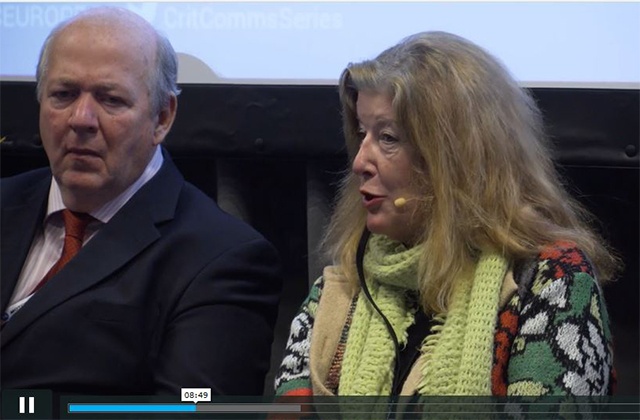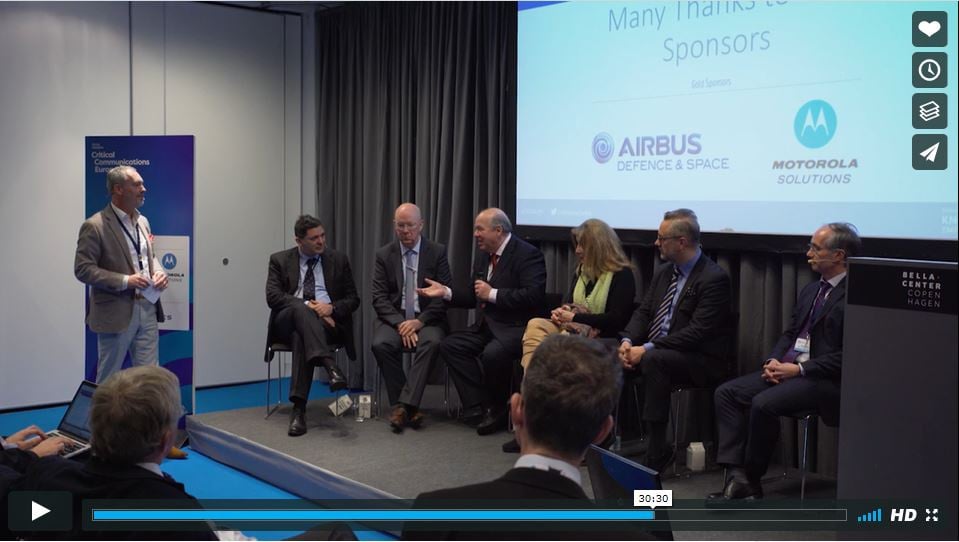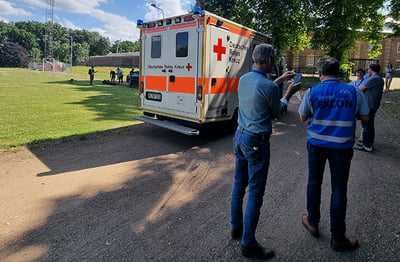TETRA is a marvelous tool for communicating between individuals, groups and organisations but what of the next level – between whole countries?
It is certainly possible – the Inter System Interface or ISI has been around for some years but only now is it really starting to bring practical results as countries link up their authority TETRA networks.
A panel discussion about ISI was one of the most informative events I attended at this year’s Critical Communication Europe, a highlight in a conference filled with interesting topics and lessons. The panel experts provided a fascinating insight into how ISI has developed and is now transforming the way countries co-operate to achieve better safety and security for their citizens.
You can watch the whole discussion on video, but you can also read on to get the highlights.
Watch the video: "Interoperability and standardization of national PMR networks" - Panel discussion at Critical Communications Europe 2017:
More than 10 years ago – three-country pilot
Panel chairman Gert Jan Wolf took us back (more than) ten years, to one of the first practical trials with interoperability between public safety officers from Belgium, Germany and Netherlands. In these early days, it wasn’t even really ISI connecting these networks but a more primitive method – the first TETRA ISI standard existed but no-one had bought it at the time.
Attention was also drawn to the Inter System Interoperability for TETRA-Tetrapol Networks project (ISITEP) being developed across Europe.
Committed to Schengen
The panel also asked the most basic question – why do we need co-operation? The answer was also basic – the risks to Europe of terrorism and uncontrolled immigration. The Schengen Treaty requires European countries to co-operate across their borders and with TETRA ISI, these treaty commitments can finally be realised.
Each country has different needs
Yet, how quickly and in which way co-operation and ISI are realised will differ for each country. Dr. Barbara Held, representing the German BBDOS TETRA network, the world’s largest, told us of the importance to Germany of the original definition of ISI - police pursuing a criminal across borders.

Elsewhere, Sweden and Norway have implemented ISI to cover numerous use cases for police, rescue and border control. Finland, Sweden and Norway are planning to extend the ISI interfaces so the three countries can co-operate on many levels in the northern areas.
The project in Sweden and Norway was admired by all panel participants. Eric Davalo from Airbus was particularly impressed with a presentation about the project last year, where police officers and other end-users spoke, rather than engineers. He saw this as proof that ISI is “completely understood and adopted.”
Who should pay?
The chairman posed the difficult question of the financing of ISI. Jeppe Jepsen from TCCA pointed out that operational and legal agreements are equally as important - how we should co-operate and what legal consequences the co-operation has.
Dr Held reminded us of practical issues, like end-to-end encryption. She mentioned separate, different solutions used by Austria, Switzerland and the Netherlands on their borders facing Germany. Panelists also suggested that complex projects (or existing “interim” solutions) could halt or at least delay interest in investing in ISI.
Connecting with LTE/5G
When it comes to LTE and 5G, both panel and audience agreed that “interworking” must be part of 3GPP standardization of 5G mission-critical communications.

Audience member Marianne N. Storrøsten, project manager of Norway’s ISI project, told us that as well as cross-border co-operation, prime-ministerial travel will also be supported. She also hoped that connection to LTE would not be another huge project.
Overall, panel and audience were confident that ISI has come of age and is making what was once difficult, a lot more straightforward.
The whole panel discussion was recorded so you can check all the details and whether you agree with the panelists!
For more information about the ISI project in Sweden and Norway, download the Key Touch article “No borders for communication for Sweden and Norway project”:





